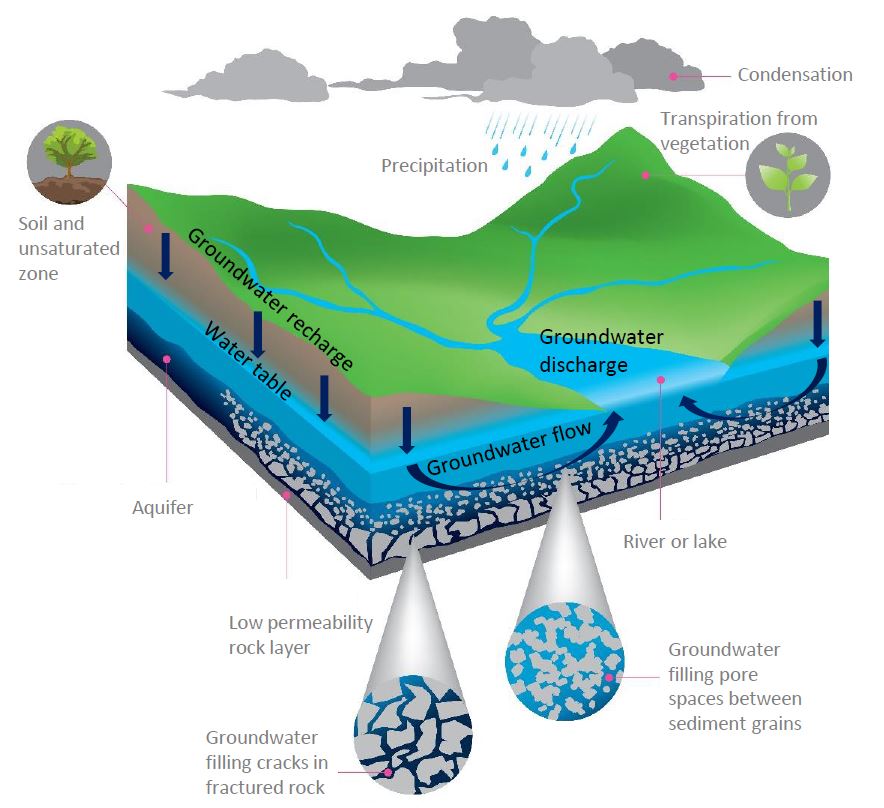The objective of the course is to give students an introduction on various phases of the hydrologic cycle; Precipitation, Evaporation, Infiltration, and Streamflow on and to give basic knowledge on the occurrence, distribution, and movement of surface water. In addition, the course gives students how the measurement and collection of the above phases are done in reality. |
understand the hydrologic cycle in the globe know how they measure different phases of hydrologic cycle, To interpret hydrological data. |
- Teacher: Wegayehu Asfaw
Objectives
At the end of the course students shall be able to
- Plan, design and analysis of the different hydropower scheme components
- Construct and supervise hydro-power schemes
Course contents
- Introduction to sources of energy
- Development of hydropower
- Estimation of water power potential
- Classification and types of hydropower development
- Water conveyance structures

Objective: Upon the completion of the course students will be able to:
- Acquire the basic concept of hydropower development
- Plan, design and analyze different hydropower scheme components
- Construct and supervise hydropower schemes
Outcomes: Upon the completion of this course students will be able to:
- identify energy sources
- Know the hydropower potential of Ethiopia and status of the world hydropower
- Plan and design hydropower scheme components
- Analyze hydrology of hydropower
- Estimate water potential
- Predict load and assess demand
- Identify hydropower plants and determine plant capacity
- Design water passage structures such as intake, canal, tunnel, forebays, surge tank and penstocks and analyze water hammer/surge pressure
- Teacher: Sufiyan Abdulmenan
Course Objective
To introduces the basic principles of engineering economy, time-value of money, different economic methods of comparing alternative proposals and project investment evaluation mechanisms.
Outcomes:
After completion of this course, students will be equipped with engineering students at list judge their design projects on the basis of the cost implications when compared with the expected benefits.
- Teacher: Aklilu Alemayehu
Objective:
√ Students to differentiate Open channel flows and pipe flow.
√ Also, the students to develop advanced understanding of steady and unsteady water flow
in open channels including streams & rivers.
Outcome:
Students will be able to:
√ Apply energy and momentum concepts to analyze open channel flow
√Apply the Manning Equation and Chezy Equation to describe uniform flow and principle
of continuity equation
√ Identify flow as gradually varied flow and rapidly varied flow and determine their flow profiles in different types of channels and hydraulic structures.
- Teacher: Dawit Abdi
The major objective of this course is to familiarize students with Environmental Law on a local, national, regional and international scale. A secondary objective is to train students in explaining and applying relevant environmental legislation from different points of view, both in writing and orally.
On successful completion of the course, students should be able to:
- Understand significant environmental legislation on national and international scale;
- Critically apply environmental legislation on different case studies;
- Understand interest group behavior for environmental issues.
- Instructor: Johannes Dirk Dingemanse
This course is divided in to seven chapters. The first chapter is general introduction about the course. Chapter two discusses on the physical properties of soils. It includes laboratory and field tests for identification of the properties. The third chapter is about one dimensional flow of water through soils. It clearly discusses how the ground water flow affects the structures built in or on the ground surface. Different lab tests are included to study the response of different soils to the flow of water through them.The fourth chapter discusses on the STRESSES, STRAINS, AND ELASTIC DEFORMATIONS OF SOILS. It is about the response of soils for the loads applied on them. It helps in identifying the load carrying capacity of different soils for the purpose of big structures. The fifth chapter discusses about two dimensional flow of water through soils. The sixth chapter is about one dimensional consolidation of fine soils. It is generally about the settlement or reduction in volume of fine grained soils due to the removal of water out from the pore spaces between soil particles. And the last chapter ,Chapter seven is about soil compaction. Here again it is about settlement or reduction in volume of soil mass but due to removal of air not water. This is very important to improve the engineering soil properties.
- Teacher: Demoze Eshete
